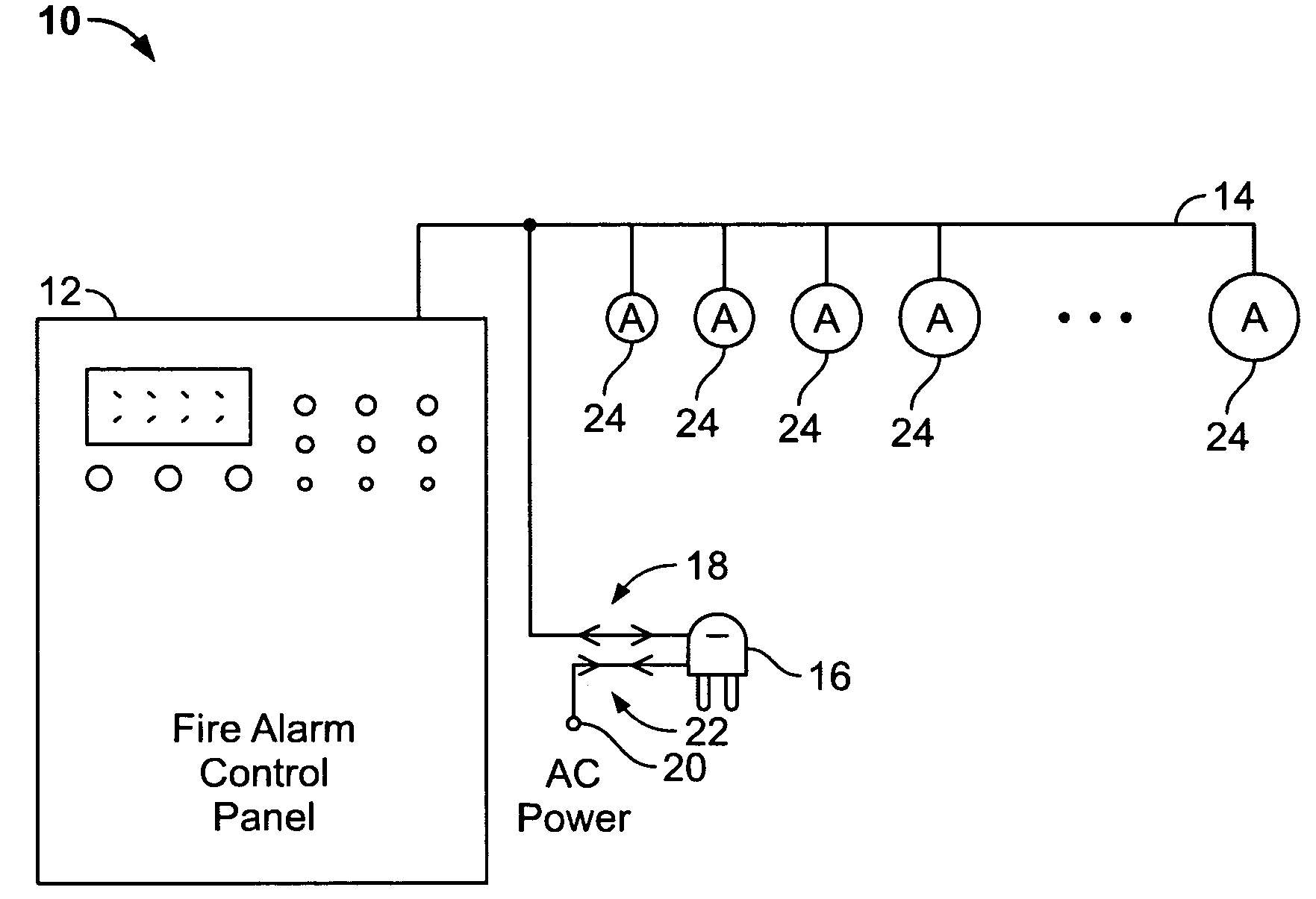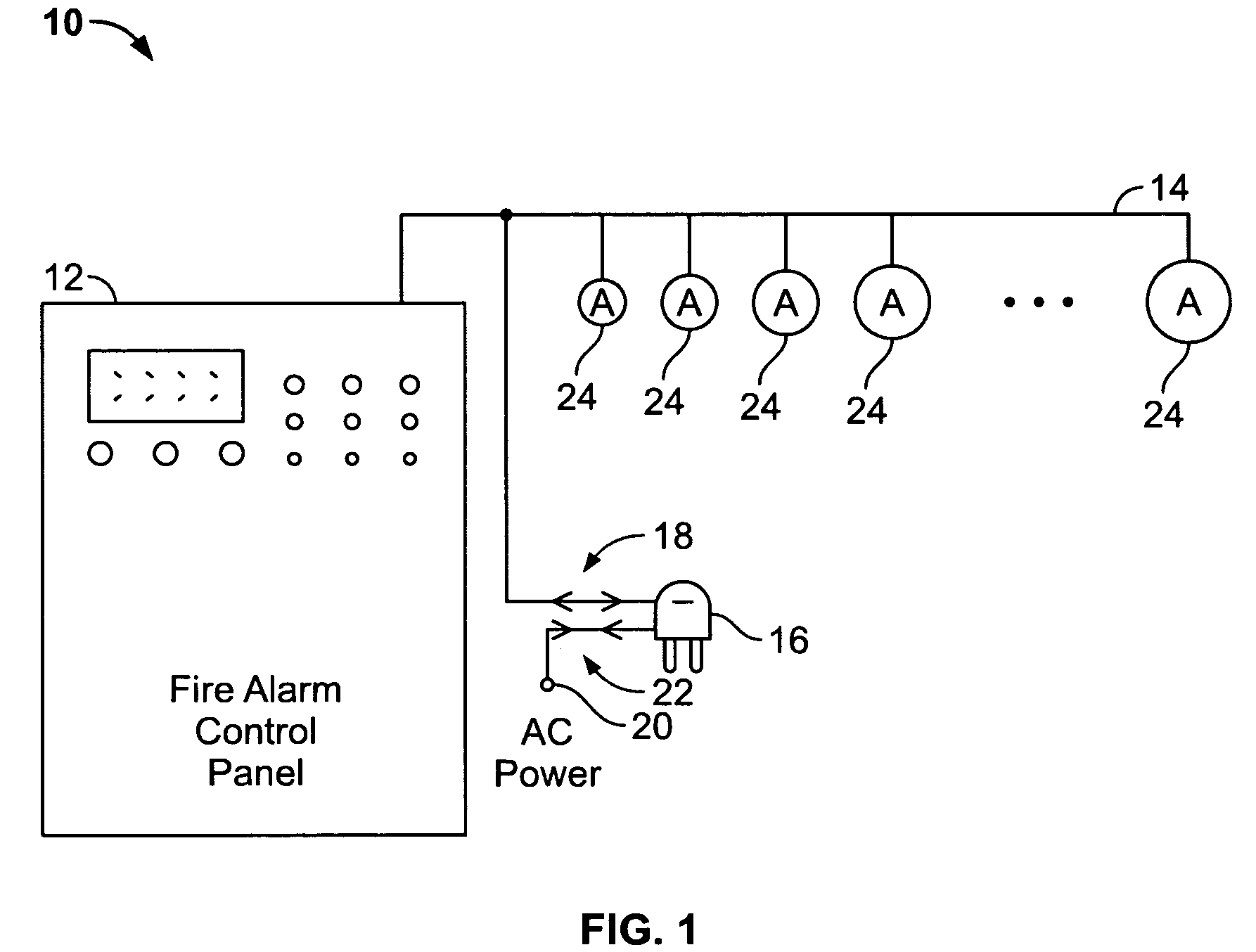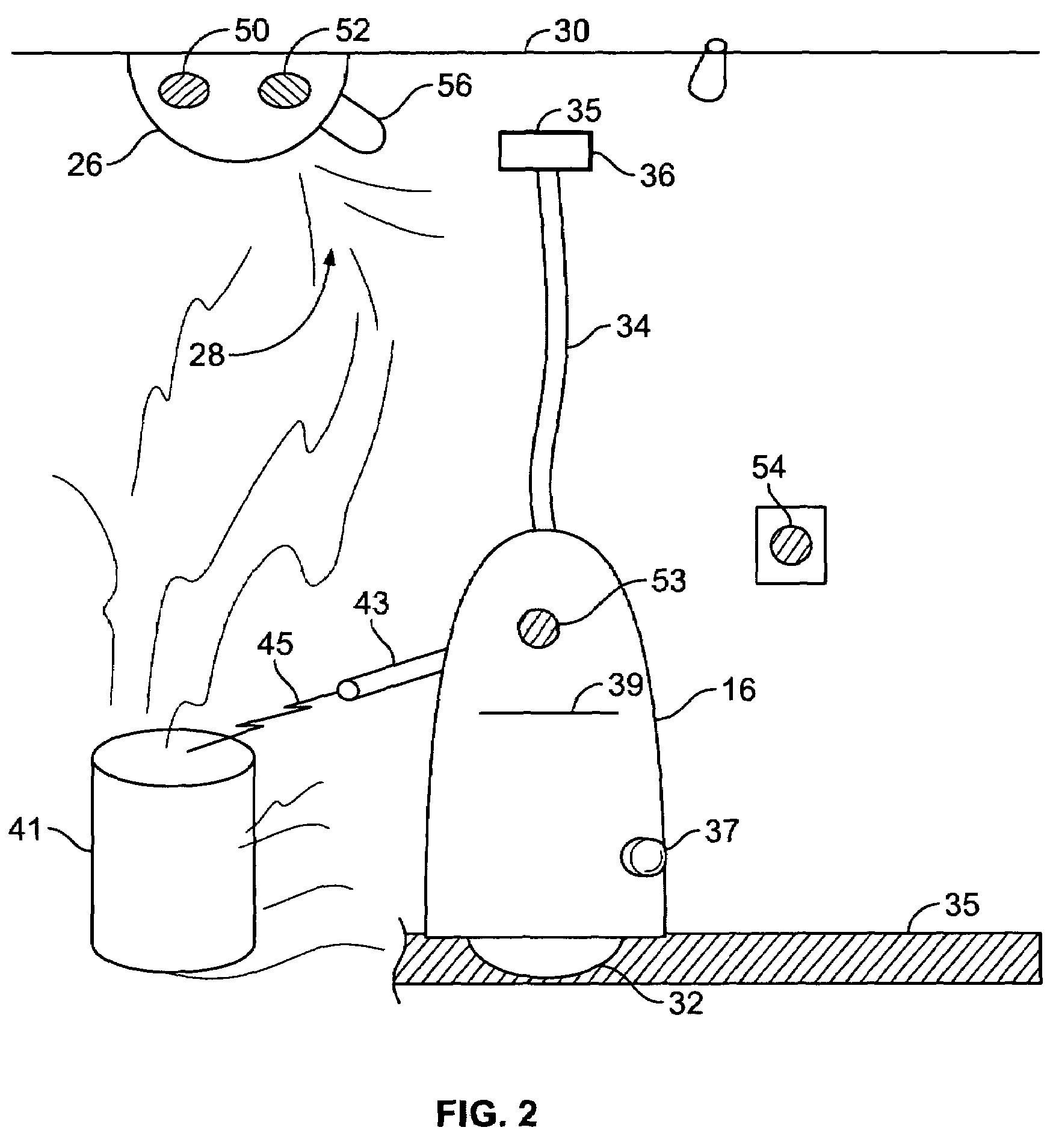Method and apparatus for detection of hazardous or potentially hazardous conditions
a technology for hazardous conditions and detection methods, applied in fire alarms, special data processing applications, instruments, etc., can solve problems such as fires that may also be extinguished before becoming extremely dangerous or life-threatening
- Summary
- Abstract
- Description
- Claims
- Application Information
AI Technical Summary
Benefits of technology
Problems solved by technology
Method used
Image
Examples
Embodiment Construction
[0014]As used herein, an element or step recited in the singular and proceeded with the word “a” or “an” should be understood as not excluding plural said elements or steps, unless such exclusion is explicitly stated. Furthermore, references to “one embodiment” of the present invention are not intended to be interpreted as excluding the existence of additional embodiments that also incorporate the recited features. Moreover, unless explicitly stated to the contrary, embodiments “comprising” or “having” an element or a plurality of elements having a particular property may include additional such elements not having that property. Also, sensors on a mobile robot may be referred to as “mobile sensors” to help distinguish such sensors from, for example, atmospheric sensors affixed to a ceiling or wall. Furthermore, “local atmospheric conditions” refers to conditions in the immediate vicinity of a particular atmospheric sensor.
[0015]In some configurations of the present invention and re...
PUM
 Login to View More
Login to View More Abstract
Description
Claims
Application Information
 Login to View More
Login to View More - R&D
- Intellectual Property
- Life Sciences
- Materials
- Tech Scout
- Unparalleled Data Quality
- Higher Quality Content
- 60% Fewer Hallucinations
Browse by: Latest US Patents, China's latest patents, Technical Efficacy Thesaurus, Application Domain, Technology Topic, Popular Technical Reports.
© 2025 PatSnap. All rights reserved.Legal|Privacy policy|Modern Slavery Act Transparency Statement|Sitemap|About US| Contact US: help@patsnap.com



